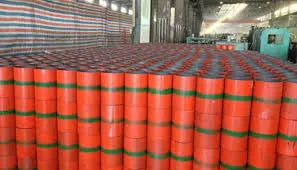- Afrikaans
- Albanian
- Amharic
- Arabic
- Armenian
- Azerbaijani
- Basque
- Belarusian
- Bengali
- Bosnian
- Bulgarian
- Catalan
- Cebuano
- Corsican
- Croatian
- Czech
- Danish
- Dutch
- English
- Esperanto
- Estonian
- Finnish
- French
- Frisian
- Galician
- Georgian
- German
- Greek
- Gujarati
- Haitian Creole
- hausa
- hawaiian
- Hebrew
- Hindi
- Miao
- Hungarian
- Icelandic
- igbo
- Indonesian
- irish
- Italian
- Japanese
- Javanese
- Kannada
- kazakh
- Khmer
- Rwandese
- Korean
- Kurdish
- Kyrgyz
- Lao
- Latin
- Latvian
- Lithuanian
- Luxembourgish
- Macedonian
- Malgashi
- Malay
- Malayalam
- Maltese
- Maori
- Marathi
- Mongolian
- Myanmar
- Nepali
- Norwegian
- Norwegian
- Occitan
- Pashto
- Persian
- Polish
- Portuguese
- Punjabi
- Romanian
- Russian
- Samoan
- Scottish Gaelic
- Serbian
- Sesotho
- Shona
- Sindhi
- Sinhala
- Slovak
- Slovenian
- Somali
- Spanish
- Sundanese
- Swahili
- Swedish
- Tagalog
- Tajik
- Tamil
- Tatar
- Telugu
- Thai
- Turkish
- Turkmen
- Ukrainian
- Urdu
- Uighur
- Uzbek
- Vietnamese
- Welsh
- Bantu
- Yiddish
- Yoruba
- Zulu
Stainless Steel Threaded Connectors for Durable and Reliable Plumbing Solutions
Understanding Stainless Steel Threaded Couplings A Key Component in Modern Engineering
Stainless steel threaded couplings are essential components widely used in various industries, including construction, plumbing, oil and gas, and manufacturing. Their significance lies in their ability to connect pipes and fittings securely, ensuring the integrity and safety of systems that transport liquids and gases. This article delves into the characteristics, applications, and advantages of stainless steel threaded couplings, highlighting why they are preferred in many engineering applications.
Characteristics of Stainless Steel Threaded Couplings
Stainless steel threaded couplings are designed specifically to join two sections of pipe, allowing them to expand or contract under temperature changes without causing leaks. These couplings are typically made from various grades of stainless steel, the most common being 304 and 316. Grade 304 stainless steel offers excellent corrosion resistance in a variety of environments, making it suitable for many applications. In contrast, Grade 316 stainless steel is ideal for more corrosive environments, such as marine applications, due to its additional molybdenum content, which enhances its resistance to pitting and crevice corrosion.
Threaded couplings are manufactured according to specific standards to ensure compatibility and reliability. The male and female threads are precision-engineered to provide a tight seal when joined together. This threading mechanism not only aids in quick assembly and disassembly but also ensures a leak-proof connection when installed correctly.
Applications of Stainless Steel Threaded Couplings
These couplings find applications across a wide array of sectors. In plumbing, for instance, they are used to connect pipes that transport water, chemicals, and other fluids. Stainless steel is particularly valued in plumbing due to its hygienic properties and resistance to rust, making it an ideal choice for drinking water systems.
In the oil and gas industry, threaded couplings play a crucial role in connecting various components within pipelines. They must withstand high pressures and corrosive substances, which is why stainless steel is often the material of choice. Furthermore, the chemical processing industry relies heavily on stainless steel threaded couplings, as they can resist the aggressive chemicals used in various manufacturing processes.
stainless steel threaded coupling

Construction and manufacturing sectors also utilize threaded couplings in structural applications. They are essential in facilitating the assembly of various frameworks, allowing for maximum structural integrity while providing flexibility in design and installation.
Advantages of Using Stainless Steel Threaded Couplings
One of the most significant advantages of stainless steel threaded couplings is their corrosion resistance. Unlike other metals, stainless steel does not rust easily, making it ideal for both indoor and outdoor applications. This characteristic not only extends the lifespan of the components but also reduces maintenance costs over time.
Additionally, the strength of stainless steel allows these couplings to bear high stress and pressure, making them suitable for demanding applications. Their durability ensures that they maintain their integrity even in harsh conditions, providing peace of mind to engineers and operators.
Another advantage is the ease of installation. The threaded design allows for quick connection and disconnection, enabling efficient assembly and maintenance of systems. This is particularly beneficial in situations where frequent modifications or repairs may be needed.
Conclusion
In conclusion, stainless steel threaded couplings are indispensable components in a multitude of industrial applications. Their strong, corrosion-resistant nature, coupled with easy installation and reliability, makes them a preferred choice for engineers and contractors alike. Understanding their characteristics, applications, and advantages empowers professionals to make informed decisions about materials used in projects, ultimately leading to more efficient and safer systems in various fields. As technology continues to evolve, the role of stainless steel threaded couplings will undoubtedly remain significant in the ongoing pursuit of engineering excellence.
-
Tubing Pup Joints: Essential Components for Oil and Gas OperationsNewsJul.10,2025
-
Pup Joints: Essential Components for Reliable Drilling OperationsNewsJul.10,2025
-
Pipe Couplings: Connecting Your World EfficientlyNewsJul.10,2025
-
Mastering Oilfield Operations with Quality Tubing and CasingNewsJul.10,2025
-
High-Quality Casing Couplings for Every NeedNewsJul.10,2025
-
Boost Your Drilling Efficiency with Premium Crossover Tools & Seating NipplesNewsJul.10,2025







